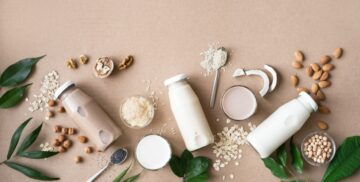The harmful effects of global warming are becoming increasingly clear. In addition to global warming, conventional plastics have also emerged as a big environmental concern as plastic keeps lingering in the environment. Recent research suggests that plastics have also entered the food chain and it can have a huge detrimental effect on animal as well as human health.
In a recently published research study, researchers from the Royal Society for the Protection of Birds (UK) and Tasmania University have found 38 million pieces of plastic waste on an uninhabited coral island in the South Pacific (Henderson Island).
Dr Jennifer Lavers, who is a marine scientist from Tasmania University, in a conversation with The Guardian told the newspaper that during her travels to some of the most far-flung islands across the globe, she has found that the ocean and beaches are full of the evidence of human activity in the form of plastic waste.
Micro-plastics
The term is used to define extremely small fragments of plastics. These micro-plastics pollute the water and have made pollution in oceans worse. The bigger problem is that these micro-plastics are often consumed by marine life. As per a report (2014) from National Geographic, the Great Pacific Garbage Patch consists mostly of millions of micro-plastics. In fact, the density is as high as 1.9 million pieces of these micro-plastics per square mile.
Seshata who is a writer at Sensi Seeds wrote in 2014 that different types of plastics such as celluloid, rayon and cellophane among other related plastics can be made by extracting hemp cellulose. Hemp is considered a good source of cellulose at it contains around 70% cellulose whereas other sources of cellulose include cotton (up to 90%), flax (65 to 75%) and wood (around 40%). Hemp is a relatively better source due to its low environmental impact and relative sustainability.
Hemp
It's rare to find plastics derived 100% from hemp but there are composite bio-plastics already available on the market. These composite bio-plastics are derived from plastics made from hemp as well as some other plant sources. These plastics offer high strength and rigidity which makes them excellent for use in the construction of musical instruments, boats and cars.
Polymer resins that include polyethylene terephthalate (PET) are used to make a variety of everyday plastic products such as plastic bottles. Many advocates of plant-derived plastic want to see 100% hemp-based plastic, the truth is the technology isn't ready just yet.
Many companies such as Coca-Cola have tried making plastic bottles that are 100% plant-based but the commercially available plastic products use only up to around 30% plant-based materials whereas the remaining 70% is still derived from traditional fossil fuel sources. Thankfully, many companies are making huge investments in research and development in order to find replacements for traditional PET. The first company that is able to produce a viable commercial product stands to earn millions due to the huge demand for such products.
Biodegradable plastic
Biodegradable plastic is a great start but even it can be a source of pollution. When biodegradable plastic is put in a landfill, it doesn't degrade and even micro-plastics derived from hemp can still be a big problem when they get out to the oceans. For efficient disposal of biodegradable plastics, these still need to be processed in commercial composting facilities and these professional facilities are not available everywhere. Therefore, it is important to develop a more responsible attitude when it comes to disposable products while making investments to create better alternatives to plastic.
Subsidies help keep the cost of fossil fuel low but hemp products are still considered a costly luxury item. While the 2014 Farm Bill legalised hemp, only a small amount of hemp is grown in the United States under a few pilot programs but most is still imported from various other countries.
Environmental footprint
The overall environmental footprint of hemp is small compared to some of the other crops and it requires fewer pesticides but when it comes to harvesting and growing, it is still labour-intensive. Seshata also notes that one major drawback of hemp is that it has a relatively higher water requirement and it also needs a significant amount of fertiliser in some soils.
It’s a fact that the price of hemp will come down significantly and the technology will also improve if we take away the restrictions on legal growing of hemp and cannabis due to the war on drugs. The potential growth in future of hemp-based plastic could get a boost from LEGO as the ubiquitous building block toy company has promised to get rid of resin derived from fossil fuels by 2030.
Emily Gray Brosious, a writer for the Sun Times, speculated in a February 2016 investigation that LEGO might consider hemp as the alternative as it is environmentally sustainable and cost-effective.
Overall, the immense potential of hemp-derived plastic remains close but just out of reach yet.








